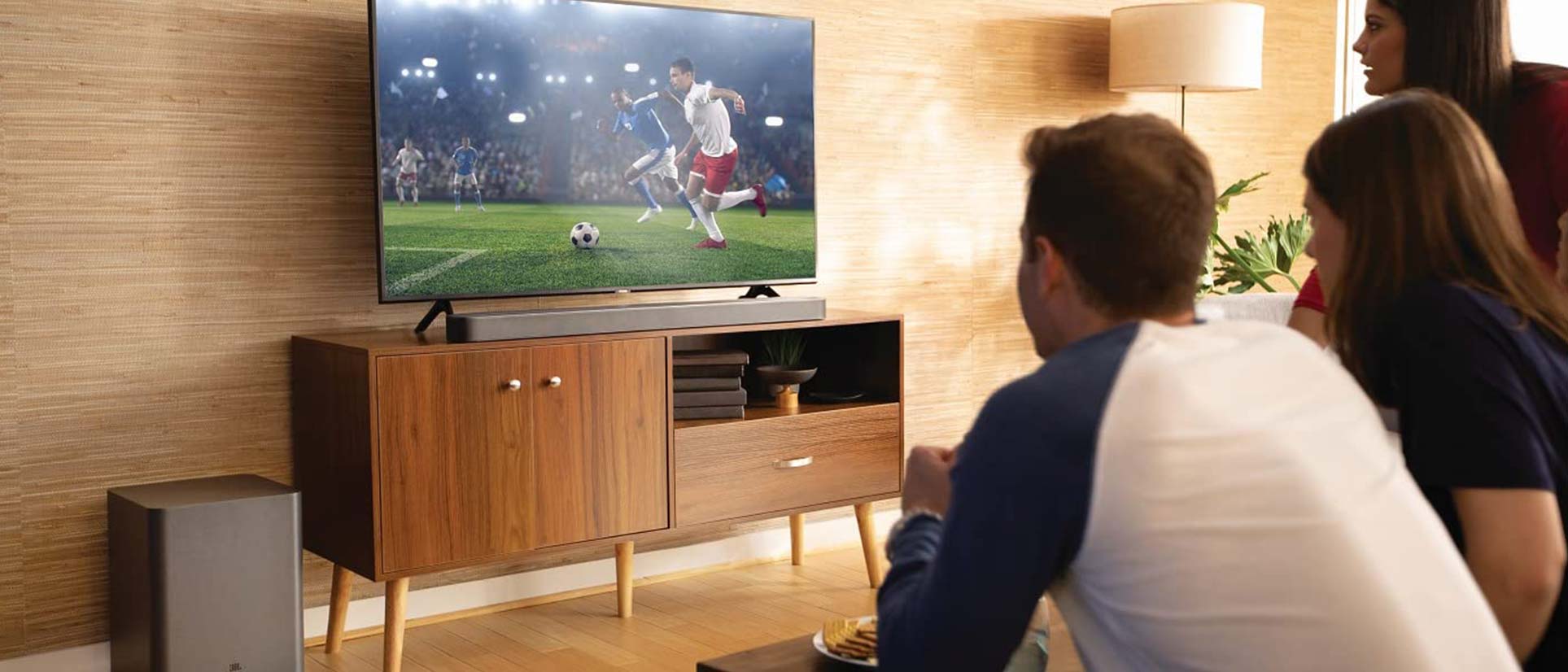Tom's Guide Verdict
The bass-rich JBL Bar 5.1 Surround soundbar creates an encompassing sound, if you can figure out how to take advantage of its talents.
Pros
- +
Big bass
- +
Clear dialog
- +
Impressive virtual surround sound
Cons
- -
More difficult to set up than it should be
- -
Overly large subwoofer
- -
No Atmos
Why you can trust Tom's Guide
At around $500, JBL Bar 5.1 Surround sits in a middle ground among soundbars. We have plenty of options for less – usually smaller 2.1 systems — and we have many choices that are more expensive, which include support for Dolby Atmos. But there aren’t that many soundbars for $500 anymore.
Bar 5.1 Surround produces a bigger, bolder sound than less expensive models, but isn’t quite as engaging as a system that takes advantage of Atmos. If your TV doesn’t support Atmos and you want something that will knock your socks off with bass, the JBL Bar 5.1 Surround may be the right fit — as long as you have space for the subwoofer and you don’t mind fiddling with the unit to get it correctly set up.
Read on for our full JBL Bar 5.1 Surround review.
- Check out the best soundbars
- Our picks for the best cheap soundbars
JBL Bar 5.1 Surround: Design
JBL’s latest Bar 5.1 changes its approach to 5.1 surround sound. The previous model had detachable wireless surrounds that you could place behind you to create a true 5.1 system. Bar 5.1 Surround, the new version, keeps all the speakers in the main soundbar and uses “Multibeam” tech to create virtual surround sound.
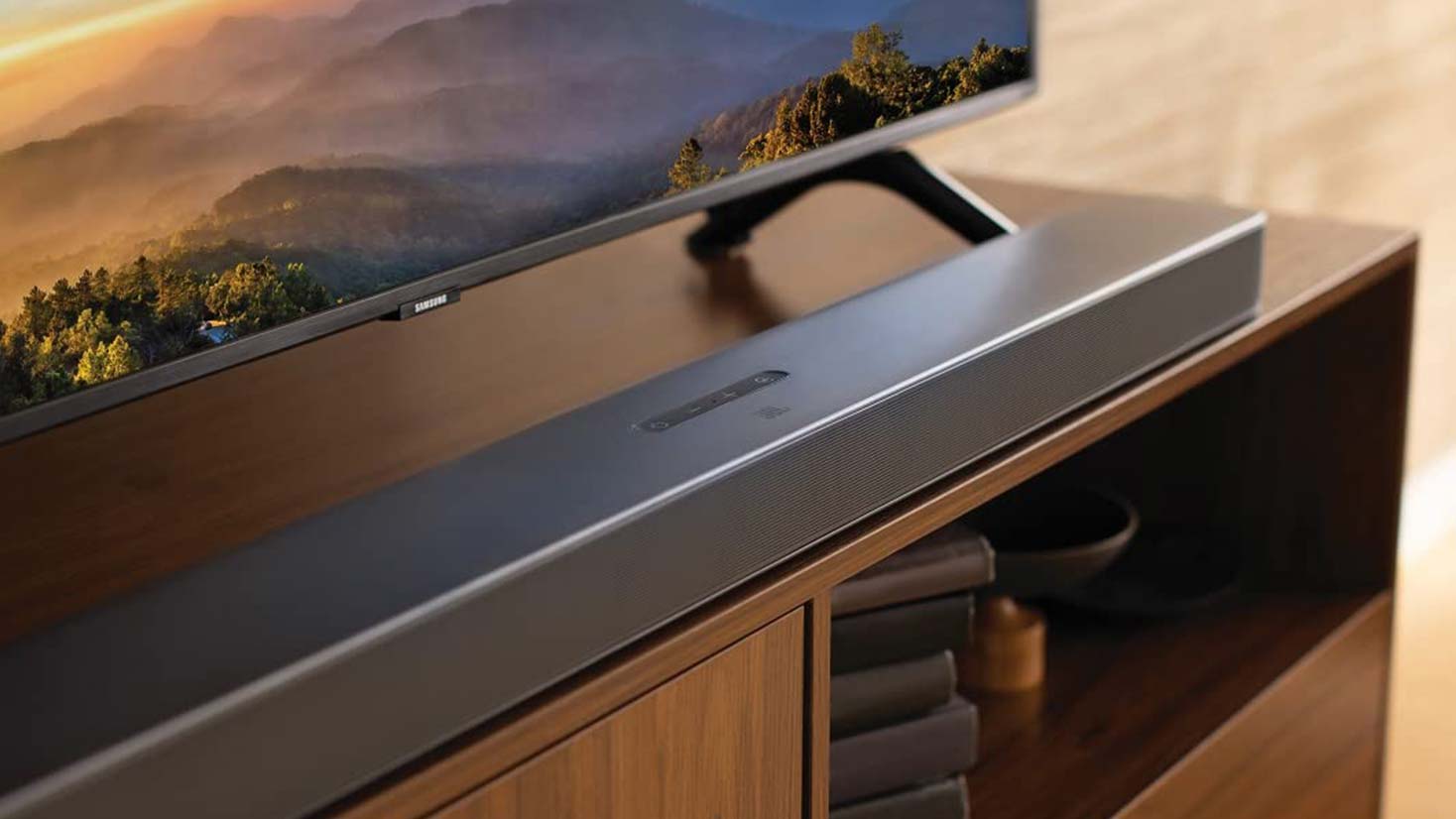
Bar 5.1 Surround has both a small footprint and an extremely large one. The main soundbar itself is rather svelte at 40 x 3.94 x 2.28 inches and its charcoal-colored case blends nicely with most TVs.

The wireless subwoofer, on the other hand, is an absolute monster at 17.3 x 12 x 12 inches. It’s the height that really stands out, especially compared to other wireless subs that are paired with soundbars – they usually try to be as small as possible. The subwoofer transducer itself is only 10 inches, which begs the question of why the subwoofer casing needs to be so big. But if you’ve got room for it and love bass, more power to you.
The main soundbar uses its space much more efficiently, packing in five drivers and two tweeters, one on each end of the soundbar.
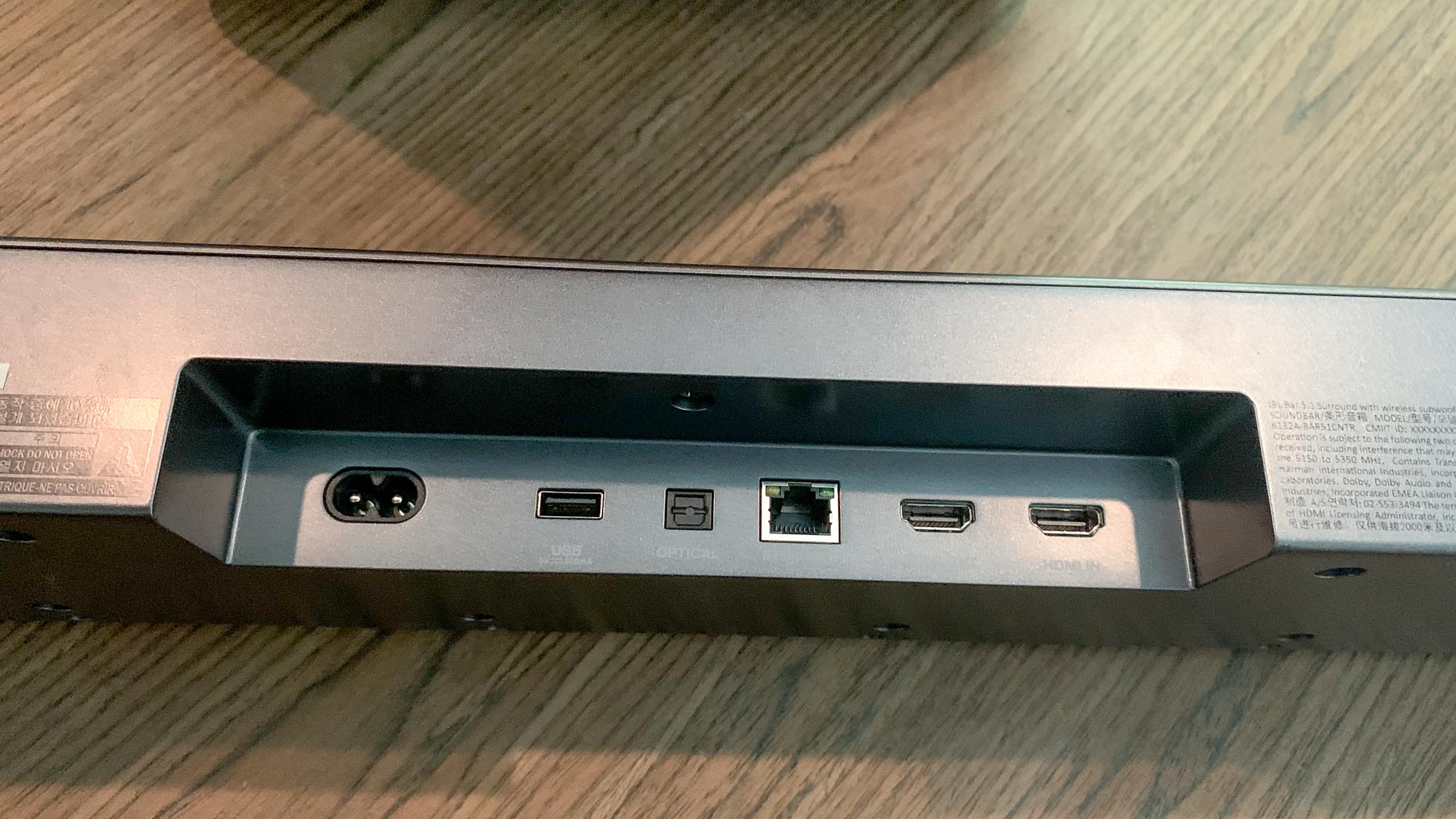
The soundbar has only a few controls on top: power, volume and input. On the back, there are connections for HDMI out (supporting audio return channel, or ARC, for a single connection to your TV); HDMI in (to connect a set top box or game console, for example); optical digital audio, if you prefer to connect to your TV that way or don’t have a TV that supports ARC; USB; and Ethernet for wired connection to your network. Bar 5.1 Surround also has Wi-fi and Bluetooth for wireless connections.
There’s an LED display on the right front of the unit. It tells you which input you’ve switched to and the volume level. I found it hard to clearly read unless I was seated directly in front of the soundbar.
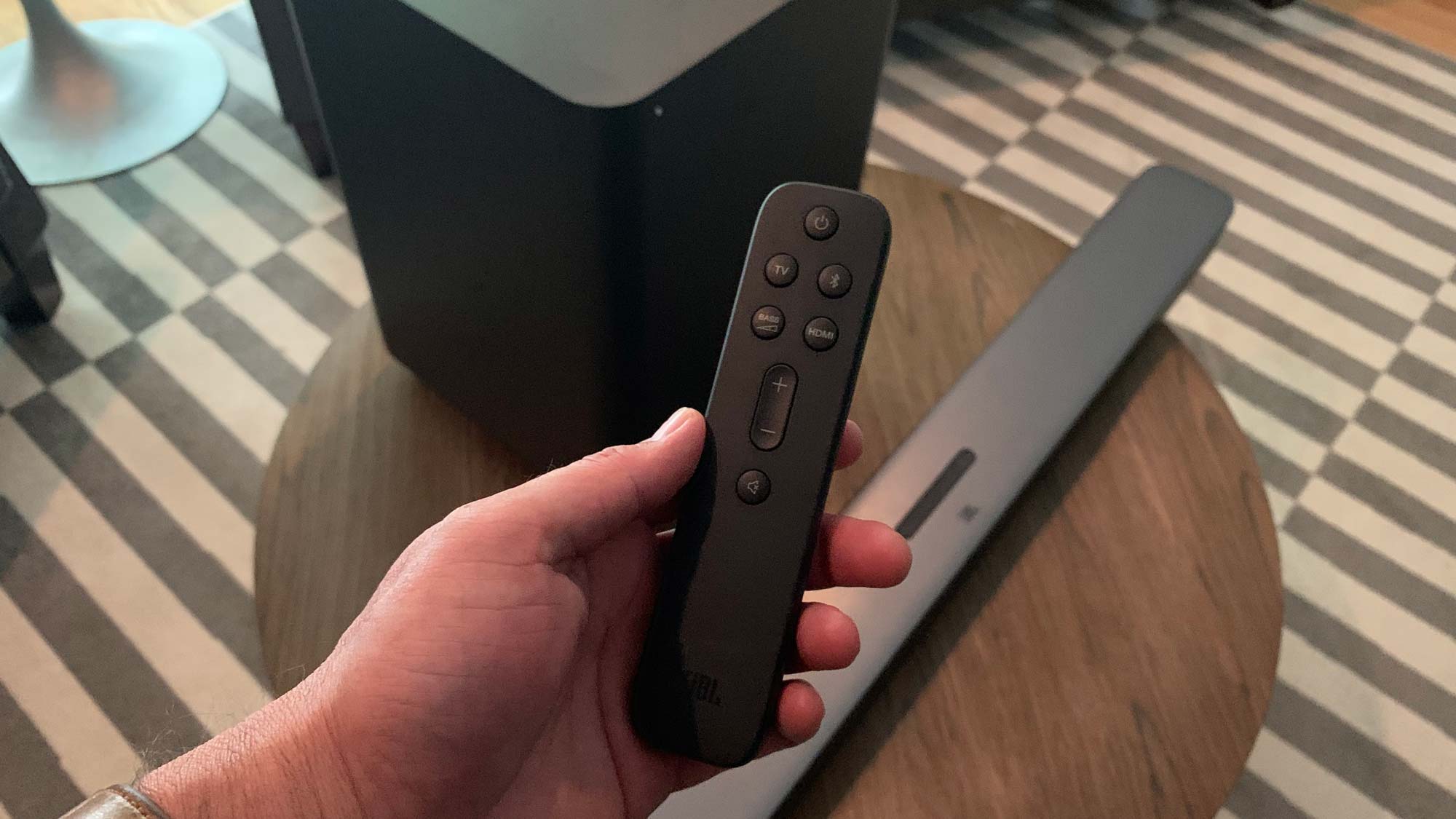
Bar 5.1 Surround comes with a simple remote with buttons for power, volume, switching inputs and adjusting the bass level. If you connect the soundbar to your TV via HDMI ARC, you should be able to use your TV’s remote to control the volume and power.
JBL Bar 5.1 Surround: Performance
Bar 5.1 Surround’s virtual surround sound worked surprisingly well and overall it produced a rich, encompassing sound. Voices were clear and easy to understand, though I found the treble to be a bit harsh in some cases. It definitely sounded better than cheaper alternatives, such as the Yamaha YAS-209, but can’t match more expensive units with Atmos such as the Sonos Arc.
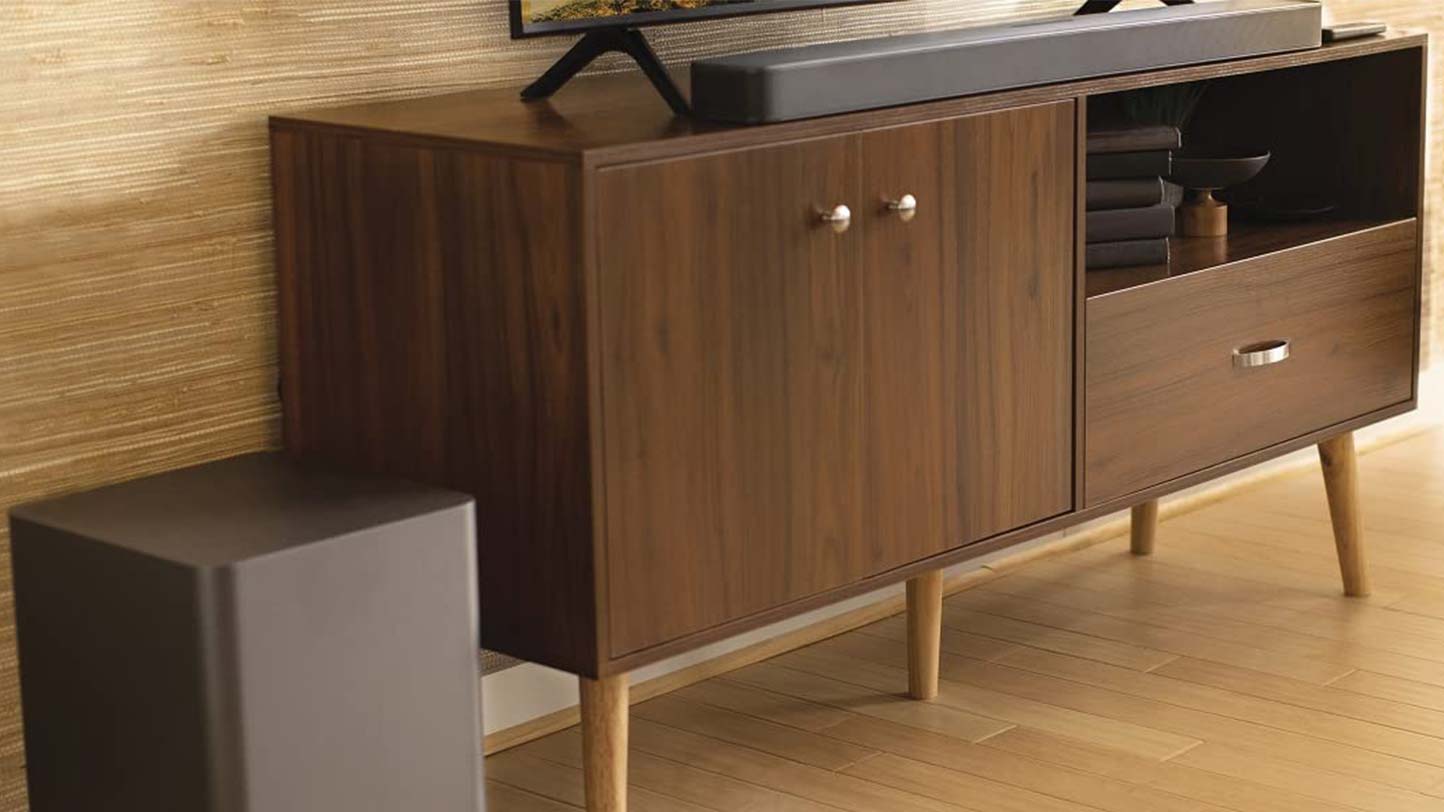
When Thor throws his Stormbreaker axe during the Wakanda battle in Avengers Infinity War, I could hear the axe move around the room — it was almost as good as a true 5.1 system. The subwoofer delivered impressive rumble when Thor unleashed his lightning on the Outriders. While watching Hamilton, the vocals were prominent in the front while the music swelled throughout the room thanks to the virtual surround sound.
The soundbar handles music almost as well as it does movies and TV. It performed best on songs that highlight vocals and bass, such as Taylor Swift’s “the last great american dynasty.” It struggled somewhat on the layered sounds of Fiona Apple’s “Shameika,” muddling together the instruments, but Apple’s voice and the rhythm were distinct. Similarly, Jason Isbell’s voice was clear on “What’ve I Done to Help,” but his acoustic guitar was low in the mix.
Bar 5.1 Surround will get plenty loud to fill your living room. It measured 90 decibels at max volume and didn’t distort much when pushed to its limit.
JBL Bar 5.1 Surround: Setup
Soundbars are supposed to be simple to set up, and the Bar 5.1 Surround is — but only to a point.
If your TV has HDMI ARC, just connect your TV to the soundbar’s HDMI out port via an HDMI cable. Make sure your TV sound is set to HDMI ARC, and it should work. Alternatively you can use the optical digital audio output from your TV or connect a set top box directly to the soundbar.
The Bar 5.1 Surround uses the Google Home app for connecting to Wi-fi. But to understand that, you need to read the online manual, not the relatively useless quick guide that comes in the box. The quick start guide indicates you should download the Google Home app, but doesn’t explain why or what to do next.
To put it in Wi-fi set up mode, you hold the power button down until you see “Setup Wifi” on the LED display. (I couldn’t get this to appear on the unit I tested, but was able to connect to Wi-fi anyway). Go to your Wifi settings screen on your phone and select the soundbar. Then launch Google Home and add the speaker to your account. After you do this, you can play audio via Chromecast or AirPlay 2. You can also pair the speaker with your phone via Bluetooth.
You’ll also want to take advantage of the soundbar’s automatic calibration to get the best surround sound effect. To do this, press the HDMI button on the remote until you see “Calibrate” appear on the LED display. The soundbar will send a series of sounds that help it measure the room and optimize the sound.
The Bar 5.1 Surround offers few other adjustments. You can set the bass from level 1 to 5 using the Bass button on the remote. You can also switch to “Smart” mode, which boosts sound effects. Doing this is more complicated than it should be: you can only do it by holding the mute button for 3 seconds, then pressing the + button.
JBL Bar 5.1 Surround: Verdict
JBL’s Bar 5.1 Surround may not offer true 5.1 surround sound, but its virtual version is an excellent approximation. Its giant subwoofer can rumble the floor during action sequences and adds depth to voices. Overall, it’s a solid mid-priced soundbar — one of few on the market in this price range. While it was harder to set up properly than most soundbars, that should be a one-time pain.
Since it did so well with virtual surround sound, I found myself wondering how it would handle the precision of Atmos — and missing the experience. While you can find some soundbars in this price range that support Atmos, you generally have to pay a premium to get it. Our current favorite is the $799 Sonos Arc, but that doesn’t include a subwoofer.
If big bass matters most to you when watching your TV, you’ll be happy with the experience Bar 5.1 Surround delivers.

Michael Gowan is a freelance technology journalist covering soundbars, TVs, and wireless speakers of all kinds of shapes and sizes for Tom’s Guide. He has written hundreds of product reviews, focusing on sound quality and value to help shoppers make informed buying decisions. Micheal has written about music and consumer technology for more than 25 years. His work has appeared in publications including CNN, Wired, Men’s Journal, PC World and Macworld. When Michael’s not reviewing speakers, he’s probably listening to one anyway.
